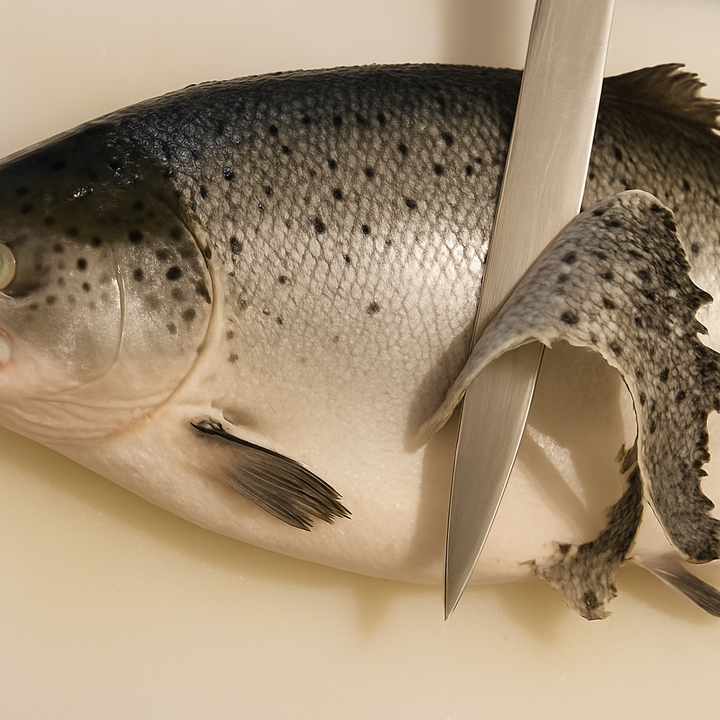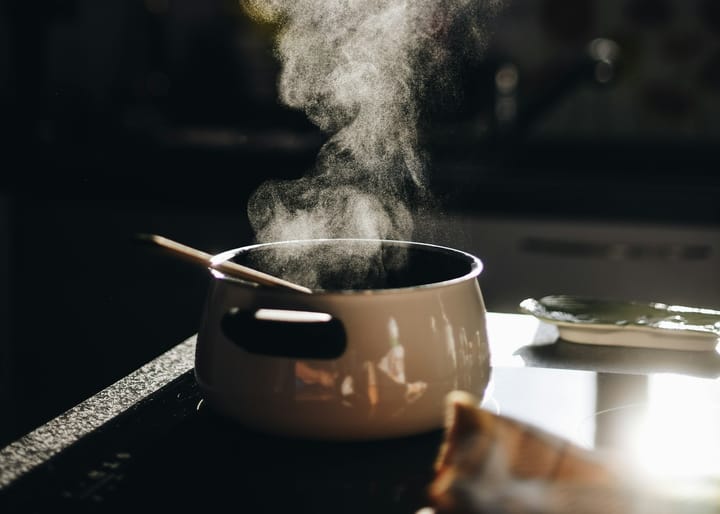Hinoki Cypress: The Ultimate Chef Cutting Board
Discover why Chefs choose Hinoki cypress cutting boards over all others. From ancient Japanese temples to modern kitchens, learn what makes this sacred wood the ultimate culinary tool

Step into any world-class sushi restaurant and you'll notice something remarkable about the cutting boards.
These aren't heavy maple blocks or bamboo surfaces common in Western kitchens, but pale, aromatic boards that seem almost too beautiful to cut on—yet represent the pinnacle of culinary craftsmanship.
These are Hinoki cypress cutting boards, crafted from wood so revered in Japanese culture it has built sacred temples for over thirteen centuries.
Understanding why these boards command prices exceeding $500 requires appreciating both their cultural significance and extraordinary functional properties.
When master chefs perform precision cuts like sogi-zukuri—the angled slicing technique essential for perfect sashimi presentation—they demand cutting surfaces that support rather than hinder their artistry.
This isn't simply about expensive kitchen equipment—it's how traditional Japanese craftsmanship creates tools that fundamentally enhance cooking while honoring centuries of culinary wisdom.
Ancient Wood, Modern Kitchen Excellence
The story of Hinoki cypress begins in central Japan's misty mountains, where these remarkable conifers have grown for millennia.
What makes this wood extraordinary becomes clear when you consider the famous Hōryūji Temple—constructed entirely from Hinoki cypress over 1,300 years ago—still stands today with its original structure intact.
This demonstrates a material property that seems almost magical: Hinoki actually gains strength over time, reaching maximum structural integrity approximately three centuries after being felled.
This unique characteristic explains why Japanese temple builders chose this wood for their most sacred structures, knowing future generations would inherit buildings that became stronger rather than weaker with age.
The most prized Hinoki comes specifically from the Kiso Valley, where pristine mountain conditions and careful forest management create cypress with unparalleled quality.
Trees grown here develop incredibly tight, straight grain patterns while accumulating optimal concentrations of natural oils that give Hinoki its distinctive characteristics.
This geographic specificity matters tremendously—just as wine enthusiasts recognize terroir in fine vintages, woodworkers understand that Kiso Valley Hinoki represents the absolute pinnacle of this exceptional material.
Understanding the True Cost of Excellence
Authentic Hinoki cutting boards carry price tags ranging from $89 for smaller pieces to over $500 for professional-grade boards due to an extensive process that reflects traditional Japanese commitment to perfection.
The journey from living tree to kitchen tool involves multiple critical stages.
Harvesting follows strict seasonal timing and sustainable forest management practices that maintain cypress grove health while ensuring consistent quality.
The wood then undergoes careful drying over three to six months, during which craftsmen monitor moisture content while preserving the natural oils that provide Hinoki's antimicrobial properties and distinctive fragrance.
This extended curing period cannot be rushed without compromising performance.
Traditional Japanese woodworkers practicing "monozukuri"—the relentless pursuit of perfection—hand-select each piece for cutting board production.
These artisans evaluate every aspect from grain alignment to oil concentration, ensuring only pieces meeting the most stringent standards reach consumers. This individual attention and expertise commands premium pricing while guaranteeing exceptional performance.
The Science Behind Superior Performance
Hinoki's functional superiority becomes apparent through its unique cellular structure and knife blade interaction.
The medium-soft density creates what culinary professionals call the ideal cutting surface—when a sharp knife contacts the board, the wood yields slightly while maintaining structural integrity.
This gentle give allows minimal blade penetration, creating barely visible score marks rather than deep gouges that develop in harder materials.
This characteristic proves crucial for maintaining razor-sharp edges required for Japanese knives, especially single-beveled yanagiba knives used for sashimi preparation such as engawa or bluefin tuna
These specialized blades, costing hundreds to thousands of dollars, require cutting surfaces that preserve their delicate geometry rather than gradually destroying it through repeated impact.
Natural oils throughout Hinoki's cellular structure provide remarkable antimicrobial and antifungal properties surpassing most synthetic materials.
These oils create the wood's characteristic light citrus fragrance while actively inhibiting bacterial growth without chemical treatments.
Scientific testing demonstrates Hinoki's antimicrobial action reduces harmful bacteria more effectively than plastic cutting boards, which harbor dangerous microorganisms in knife-created grooves.
Additional advantages include weight efficiency—Hinoki boards weigh one-third less than comparable maple alternatives while maintaining superior durability.
The wood's natural structure absorbs minimal moisture while drying quickly and completely, preventing the warping and cracking that plague many wooden cutting boards.
Comparing Premium Alternatives
Understanding Hinoki's performance relative to other high-end materials clarifies why discerning chefs choose this Japanese cypress despite premium pricing.
Maple boards have long represented the Western professional standard, offering excellent durability and attractive grain patterns.
However, maple's natural hardness gradually dulls knife edges, particularly thin Japanese blades, and typically requires earlier replacement due to deeper scarring.
Bamboo boards gained popularity through sustainability credentials and appealing aesthetics, but their fibrous structure and hardness prove harsh on knife edges, especially problematic for maintaining precise Japanese blade geometry.
Bamboo's tendency to absorb odors and stains requires frequent deep cleaning that compromises structural integrity.
High-end plastic boards provide excellent initial sanitation and knife-friendly surfaces, but repeated cuts create microscopic grooves harboring bacteria that become increasingly difficult to sanitize.
Plastic boards also lack natural moisture-wicking properties that keep wooden surfaces stable and dimensionally consistent.
The Complete Sensory Experience
Using a Hinoki cutting board engages all the senses in ways that transform routine food preparation into a more mindful and enjoyable experience.
The visual beauty of Hinoki immediately distinguishes it from ordinary cutting boards, displaying a pale, creamy color with subtle yellow undertones that develop a gentle patina over years of use.
The tight, straight grain patterns create elegant linear designs that complement both traditional Japanese aesthetics and modern kitchen designs.
The tactile experience of cutting on Hinoki reveals the wood's exceptional quality through subtle feedback that skilled chefs learn to appreciate over time.
The surface provides just enough resistance to prevent ingredients from slipping while yielding appropriately under knife pressure. This balance creates a cutting feel that many professionals describe as satisfying and confidence-inspiring.
Perhaps most distinctive is Hinoki's natural fragrance, which releases a gentle, pine-like aroma when the wood becomes damp or receives fresh cuts.
This scent, derived from the same natural oils that provide antimicrobial protection, creates a pleasant working environment that many chefs find calming and focus-enhancing.
Unlike artificial fragrances that might interfere with food flavors, Hinoki's natural aroma actually complements the preparation of fish and rice dishes, explaining its traditional association with sushi preparation.
Care and Maintenance
Proper Hinoki care requires understanding the wood's unique characteristics and developing maintenance habits that preserve its exceptional properties for decades.
Begin each use by briefly dampening the board's surface—a traditional Japanese practice that prevents staining and eases cleanup.
Clean gently to preserve beneficial natural oils.
Wash with warm water and mild soap using a soft cloth or brush, avoiding soaking or harsh detergents that strip protective oils providing antimicrobial properties.
Apply food-grade mineral oil or mineral oil-beeswax mixture monthly to maintain moisture balance and enhance water resistance.
For odor removal, create a solution using five parts carbonated water to one part white vinegar.
This natural mixture neutralizes odors while providing antimicrobial action without damaging the wood's cellular structure.
Store in a dry, well-ventilated location where air circulates around all surfaces to protect your investment.
Current Market Pricing Reality
Today's market for authentic Hinoki cutting boards reflects the genuine costs of premium materials, traditional craftsmanship, and limited supply from specific Japanese regions.
Premium professional-grade boards command significantly higher prices, with specialty Japanese cutting boards reaching $200 to $400 for larger, thicker pieces crafted from the finest Kiso Valley cypress.
Custom sizes and specialty treatments can push prices even higher, with some artisan boards exceeding $500 for restaurant-quality pieces designed for heavy commercial use in demanding professional kitchens.
The Long-Term Investment Perspective
For serious culinary enthusiasts and professional chefs, a Hinoki cutting board represents a long-term investment that pays dividends through superior performance, extended knife life, and enhanced cooking enjoyment.
The knife-preserving properties translate directly into reduced sharpening costs and extended blade life, particularly important for expensive Japanese knives.
By maintaining sharper edges for longer periods, a Hinoki board can significantly reduce these ongoing expenses while preserving the performance characteristics of expensive Japanese steel.
The durability means properly maintained boards provide decades of service, making the cost-per-use remarkably low for tools used multiple times daily.
When a Hinoki board serves faithfully for twenty years, the daily cost drops to just two cents—exceptional value for preserving knife edges and enhancing food safety through natural antimicrobial properties.
Embracing Culinary Excellence
The Hinoki cypress cutting board transcends ordinary kitchen equipment—it embodies a philosophy of culinary excellence that honors centuries of Japanese craftsmanship while delivering unmatched performance.
For those who understand that exceptional ingredients deserve exceptional tools, investing in authentic Hinoki represents a commitment to the highest standards of food preparation.
The premium pricing reflects genuine value from sacred wood, masterful craftsmanship, and functional superiority that alternatives cannot match.
Every aspect, from knife-preserving surfaces to natural antimicrobial protection, demonstrates why Japanese chefs have trusted this material for generations.


